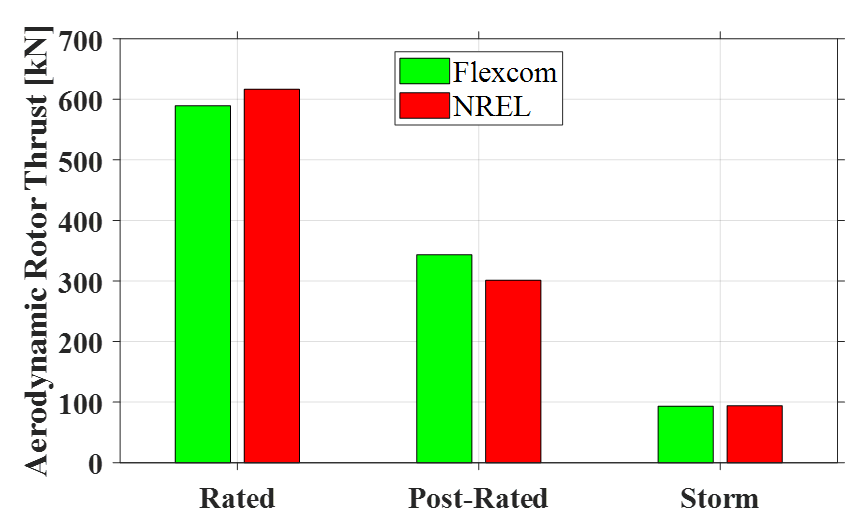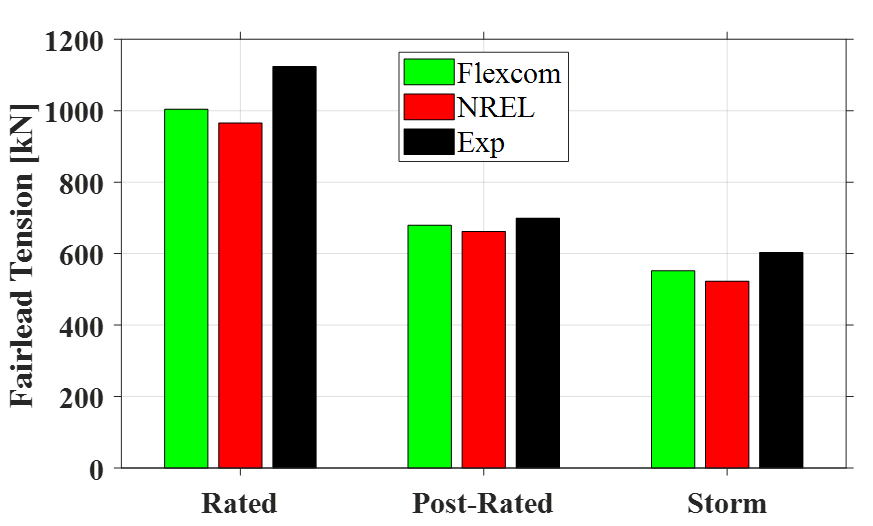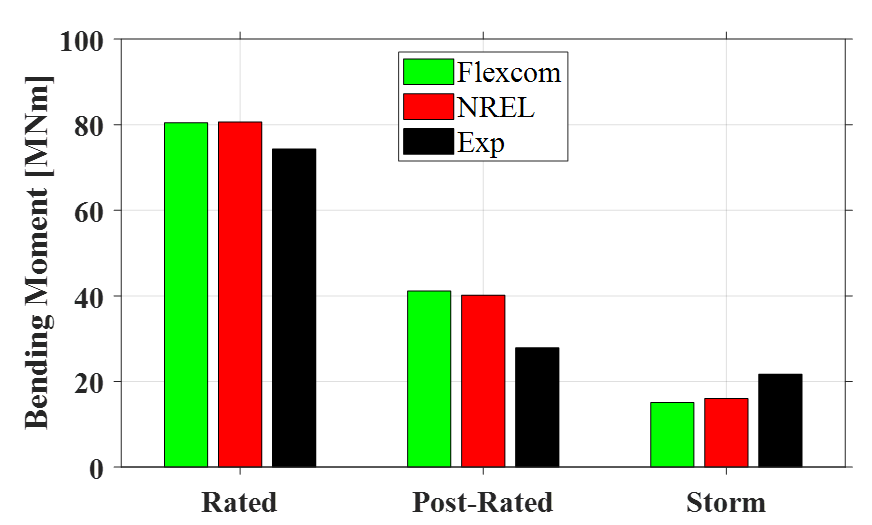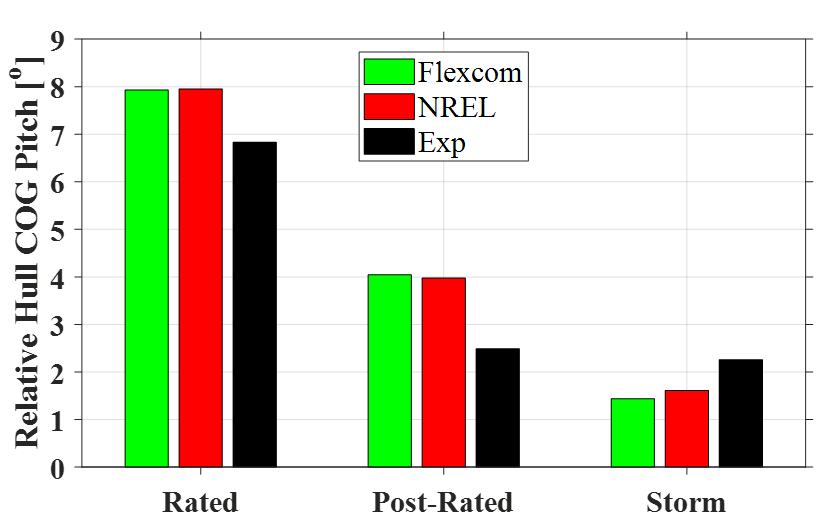The objective of the wind-only load cases is to check and tune the rotor thrust in the numerical models. Each case features a steady, uniform wind loading, and separate tests are executed to examine rated, post-rated and storm conditions (see Load Cases). In the experiments, thrust tests were firstly performed with the platform fully constrained. The blade pitch angle was adjusted to match the desired tower base moment, since no thrust sensor was present in the nacelle. After the blade pitch angle was selected, wind-only tests were also conducted with the platform in the moored condition. In these model tests, the turbine thrust influences the platform surge and pitch position in addition to the tower base moment. This data provides two additional checks to ensure the numerical models accurately replicate the real-life aerodynamic loads.
The fixed platform tests are designed to isolate the impact of the wind loading, allowing for a more focused comparison of aerodynamic modelling across all the numerical models, prior to the simulation of the free-floating platform. There is good general agreement for rotor thrust force between all numerical models (only Flexcom & NREL shown here).

Rotor Thrust (Fixed Platform)
The following figures present the steady state response of a moored platform where movement is allowed in all DOFs. The results presented are the ones subtracted from the static equilibrium offset to convey the dynamic response only for each of the environmental load cases. Again, thrust predictions from the various numerical models are compared with each other as a benchmarking validation exercise for the participants. As in the fixed platform case, rotor thrust in the moored configuration shows good correlation between the Flexcom and NREL models.
Tension in the windward mooring line is under-predicted by the numerical models. Discrepancies are largest at the rated wind speed, as expected, as this is where rotor thrust reaches its maximum. Some of this discrepancy stems from the static equilibrium configuration where the experimental model also showed higher tension (see Static Mooring Line Tensions). It is also possible that the mooring system stiffness is slightly higher in the experimental set-up, thereby restricting platform pitch motions more effectively due to a tauter windward mooring line. This conjecture is supported by the hull pitch data where the experiments show reduced pitch at rated wind. Lower pitch means that the rotor plane is more perpendicular to the wind flow, thereby increasing the projected rotor plane area and leading to higher thrust forces. Fairlead tension is directly related to rotor thrust hence the experimental data shows higher tension in the windward mooring line. This explanation holds true for rated and post-rated wind conditions. It is unclear why the numerical models tend to overpredict the tower base bending moment, given that this is primarily governed by rotor thrust. Perhaps the increased pitch is reducing the gravitational moment due to the rotor overhang, and as the static moment tends to oppose the wind-induced moments, this leads to higher moments overall.

Fairlead Tension

Tower Base Moment

Hull Pitch